Implementing Climate Change Strategies: Cap-and-Trade Funding For Local Solutions
Implementing Climate Change Strategies: Cap-and-Trade Funding For Local Solutions
The Global Warming Solutions Act of 2006 (Assembly Bill 32) laid out an ambitious vision for reducing greenhouse gas emissions while protecting economic growth. Reaching these goals requires new levels of political will, ingenuity and investment from local to state governments and industry leaders. Now that a landmark piece of this groundbreaking legislation has started to bear fruit, there is money to turn those big ideas into reality.
California’s market-based “cap and trade” program, which requires polluting industries to buy carbon credits from the state, has netted nearly $1 billion for the coming year that will be targeted towards sustainable communities, transit, clean energy and natural resource protection programs that reduce the amount of greenhouse gases that are contributing to climate change. Cap-and-trade revenues are estimated to grow significantly – up to $5 billion annually by the end of the decade – once the program is expanded next year to include gasoline producers.
This funding will provide critical resources that California communities need to protect our climate, grow a sustainable economy, and improve the health of all residents.
As this revenue begins to come in, it’s critical to look at the specific opportunities they present for local governments, and what local governments can do to position themselves to obtain their share of these new state funds.
A Permanent Funding Source
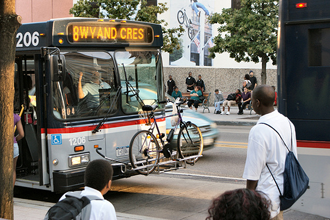
The Local Government Commission has been working with local government and special district associations, including the League of California Cities and California State Association of Counties, to encourage state agencies and legislators to allocate funding for local government programs. While the budget doesn’t create a separate local greenhouse gas reduction fund as we had proposed, we’re pleased to see opportunities to support critical local programs throughout most of the investment categories.
Approved earlier this month, the state budget invests almost a billion dollars of cap-and-trade revenue in various state programs related to sustainable communities, clean transportation, energy efficiency, clean energy, natural resources and waste diversion this coming year. More importantly, the budget reflects the strategic value and long-term environmental, economic and social equity benefits of addressing climate change by establishing a framework to ensure that ongoing climate initiatives will have a secure, sustained source of funding well into the future.
Putting Cap-and-Trade Dollars to Work
California’s cap-and-trade program sets a statewide limit on the aggregate greenhouse gas (GHG) emissions from industrial sources responsible for roughly 85% of the state’s GHG emissions. Through quarterly public auctions, large polluters can purchase “allowances” for every ton of carbon dioxide they emit. Companies subject to the statewide cap are financially motivated to make long-term investments in cleaner, greener and more efficient production.
Based on the first update to the Climate Change Scoping Plan, the cap-and-trade program will account for approximately 30% of the reductions needed to reach the AB 32 goal of reducing GHG emissions to 1990 levels by 2020.
The state is currently on pace to meet the 2020 Carbon Reduction Goals established in AB 32, a remarkable feat for one of the largest economies in the world. But there is still much work to do. As the State shifts its climate-protection focus to the long-term horizon, local governments will play an increasingly important role in achieving the 2050 goal and ensuring that the pathway brings the most benefit to our households and businesses, builds resilience against climate change, and helps our communities thrive.
These deeper reductions will require larger investments. The budget provides $832 million in cap-and-trade revenue to support proven and pilot programs that will reduce GHG emissions, while also supporting and protecting our most disadvantaged communities.
Nearly 25% of Californians live in poverty, and many of their neighborhoods are suffering from the health and economic impacts of pollution. To address these conditions, Senate Bill 535, passed in 2012, requires that the state invest at least 10% of the cap-and-trade proceeds directly in the most disadvantaged communities and at least 25% in programs that provide benefits to these communities.
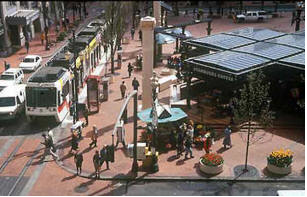
Emission reductions will be attained by modernizing the state’s bus and light-rail systems, encouraging sustainable development that emphasizes affordability and access to public transportation, reduces energy and water use and impacts to agriculture, restores urban and rural forests, and reduces waste through compost and recycling programs.
The approved budget permanently allocates 60% of future cap-and-trade proceeds to public transit, affordable housing, sustainable communities (a total of 35%) and high-speed rail (25%).
Focusing on Integrated, Equitable Strategies
It was our hope that through forming a separate local greenhouse gas reduction fund the state could support innovative, integrated projects that cut across current state grant silos. We will continue to work with state agencies to encourage a focus on grant guidelines that leave flexibility and incentivize integrated projects.
In the meantime, local governments should be lining up local projects that offer deep emission reductions and comprehensive benefits – especially in disadvantaged communities. Local officials have the opportunity to design programs that integrate land-use and transportation strategies, leverage investments for broader policy change, and maximize benefits (such as lower energy and water bills, transit options, affordable housing and urban greening) for vulnerable populations.
Rather than fixating on projects for each pot of cap-and-trade dollars, local governments can work to take an integrated approach to spending this new money. For example, housing programs could prioritize developments that give out free transit passes, have electric carsharing, and greatly exceed water and energy efficiency standards. Families save money, the need for new infrastructure is reduced, and we move closer toward our 80% GHG reduction goal. Such an integrated strategy would leverage GHG-reduction funding to provide greater resiliency and economic value for the whole community.
Implementing Transportation Alternatives
The new budget and its future funding plan will invest in transit operations and expansion and affordable, transit-oriented housing, helping achieve AB 32 goals and supporting the implementation of regional sustainable community strategies.
In FY 2014-15, transportation-related programs (not counting High Speed Rail) will receive more than $380 million, including funding for transit and intercity rail expansion and operation, low-carbon transportation and the implementation of sustainable communities strategies.
Transit and intercity rail: To expand city bus and rail capital programs, $25 million in Caltrans grants will help transit operators integrate state and local rail and other transit systems, including those located in disadvantaged communities, and those that connect to the high-speed rail system. An ongoing commitment of 10% of future cap-and-trade proceeds will be dedicated to these types of programs.
The budget also funds operations costs of low-carbon transit, with another $25 million for local transit agencies to support new or expanded bus and rail services. These expenditures must demonstrate increased ridership and reduced GHG emissions. The budget also provides an ongoing commitment of 5% of future cap-and-trade proceeds for this purpose.
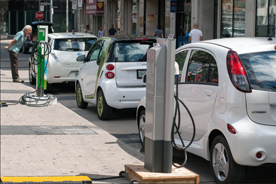
Low-carbon transportation: To push transportation toward a smaller carbon footprint, $200 million will be allocated to accelerate the transition to low-carbon freight and passenger transportation (through incentive programs for zero and low-emission cars, clean buses and trucks, and sustainable freight technology, for example), with a priority for disadvantaged communities, and put 1.5 million zero-emission vehicles on the road by 2025.
Sustainable communities: Affordable housing and sustainable communities programs will receive $130 million through the Strategic Growth Council for projects that increase walking, bicycling and transit ridership, affordable housing near transit stations, preservation of agricultural land, and local planning that promotes infill development and reduces the number of vehicle miles traveled.
“In terms of greenhouse gases, our biggest challenge remains the amount of gasoline Californians use. Each year, our motor vehicles use more than 14 billion gallons of gasoline to travel over 330 billion miles,” Governor Brown said in his State of the State address earlier this year.
The budget also provides an ongoing commitment of 20% of future cap-and-trade proceeds for this program and requires that at least half be allocated for affordable housing projects.
As local governments, you are in a great position to know the transportation and affordable housing opportunities in your community. We strongly urge you to look at local plans and programs that may have been on hold or delayed because of funding, and see where they might align with these climate-smart goals, so when the guidelines are released you are ready to take advantage of them.
Sparking Energy Savings and Clean Power
Encouraging commercial retrofits can reduce energy use by 13%, and reduce a business’ energy costs by as much as 30%. Retrofitting residences can also provide significant energy and GHG reductions. Energy-efficiency retrofits of single-family homes can achieve estimated energy savings of 30% or more, and multi-family buildings can save from 10-30%, according to the California Energy Commission’s Energy Aware Planning Guide written in part by the LGC.
Low-income weatherization and solar: $75 million in cap-and-trade funds will help install energy efficiency and renewable energy improvements in low-income homes. Weatherization techniques typically encompass weather-stripping, insulation, caulking, water heater blankets, fixing or replacing windows, refrigerator replacement, electric water heater repair/replacement, and heating and cooling system repair/replacement. Renewable energy measures include solar water heaters and photovoltaic systems.
In recent years, these efforts have been largely funded by one-time federal stimulus funding. Having a more stable funding source will provide the certainty needed for longer-term investments in energy programs and workforce development.
Green State buildings: These annual investments also provide $20 million for energy-efficiency upgrades and renewable generation projects – “zero net energy” cost-saving measures such as efficient lighting, energy management systems and equipment controls, insulation and HVAC equipment – in public buildings, including UC and CSU campuses.
Food to energy: To help reduce GHG emissions from agricultural activities, $15 million will support projects that capture greenhouse gases, harness these emissions as renewable bioenergy sources, improve agricultural practices, and promote low-carbon fuels, agricultural energy and operational efficiency. Funding would also help develop technical standards that would allow low-carbon agricultural biofuels to be sold in California.
The Local Government Commission has long championed energy efficiency as a cornerstone strategy for sustainable community programs. To help you identify best practices and resources to take advantage of this funding when it becomes available, we recommend visiting the Statewide Energy Efficiency Collaborative, where we have been compiling and sharing a wide array of practical strategies and tools for energy efficiency. We also recommend reviewing our factsheet on “Supporting Energy Efficiency: Practical Strategies for Local Leaders.”
Natural Solutions to Climate Change Impacts
Extreme fires, storms and heat waves are already costing lives and property damage. According to the state’s updated adaptation plan, Safeguarding California, a single extreme winter storm in California could cost on the order of $725 billion – with total direct property losses of nearly $400 billion and devastating impacts to California’s people, economy and natural resources.
Water is an ongoing issue in California, but is even more so now because of the drought and the expected shifts in temperature and precipitation patterns associated with climate change. Wetland restoration is also critical to help prevent major flooding that is anticipated become more severe due to sea level rise, severe storms and snow melt.
The budget sets aside $92 million for wetlands and coastal watersheds, with $25 million to implement projects that provide carbon sequestration benefits, including restoration of wetlands (including those in the Delta), coastal watersheds and mountain meadows. These kinds of projects are identified in the Water Action Plan and are integral to developing a more sustainable water-management system statewide.
Forty million dollars of cap-and-trade funds were already set aside through emergency drought legislation enacted in February 2014 for grants to local agencies to fund water-conservation measures that reduce GHG emissions associated with the amount of energy used to move, treat and heat water.
Our current dry conditions and increasing extreme heat underscores the need for fire prevention. The Department of Forestry and Fire Protection will get $42 million to support urban forests, forest restoration, reforestation services, forest pest control and vegetation management programs that reduce wildfire risk and increase carbon sequestration. These expenditures will enhance forest health and reduce fuel loads in light of climate change increasing wildfire intensity and damage.
CalFire’s vegetation management program is a cost-sharing program with landowners designed to reduce the risk of wildland fire. The forest legacy program invests in forestlands to prevent conversion to non-forest use.
In urban forests, trees help sequester carbon, shade streets, regulate temperature, and avoid urban heat island effect.
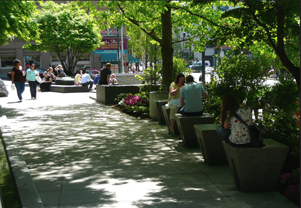
Investment in new or expanded clean composting and anaerobic digestion facilities – which support the state’s 75% solid-waste recycling goal – is necessary to divert more materials from landfills, a significant source of methane emissions. To divert waste, cap-and-trade provides $25 million in financial incentives to encourage capital investments that expand waste-management infrastructure, including low-interest loans for recycling and composting facilities, with a priority in disadvantaged communities.
These programs can help reduce GHG emissions by redirecting organic waste from landfills to anaerobic digestion facilities, and increasing recycling, which could produce fewer GHG emissions than the manufacturing of new products.
For local governments, these programs represent an opportunity to bring local resources to bear in your community. Whether your community encompasses target wetlands areas, or you have urban forestry opportunities, you can and should be tracking the state agencies who will be funding efforts as they are likely to release RFPs in the coming months.
One place to start is “The Awhahnee Water Principles: A Blueprint for Regional Sustainability“. Produced by the LGC, this guide provides ideas for water-smart urban initiatives that have been implemented and can potentially align with cap-and-trade program requirements.
The Local Government Commission will continue to track and report on emerging guidelines and resources, so stay tuned.
Act Locally, Influence Globally
California is leading the global charge to protect people and the environment against climate change.
California’s sweeping emissions reductions plan is an inspiring model for similar state plans in the Pacific Northwest and across the nation. At the federal level, although many climate-change responses are stalled in Congress, President Obama recently issued an executive order to reduce carbon from power plants. And overseas, international resistance to tackling climate change is beginning to thaw – witness forward movement like China’s commitment to an emissions cap.
Carbon pollution has a price tag, but now, with our state’s new funding plan, California is poised to turn those dollars into climate solutions – opening up a dramatic new era for substantial and transformative investments in a sustainable future for all of our communities.
To do so will require an unprecedented level of collaboration and innovation to assure that successful projects create positive momentum to catalyze greater change. Local governments are critical to piloting cutting-edge solutions and creating tangible community benefits.
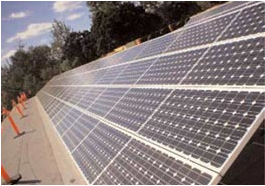
Local governments can prepare for funding by identifying disadvantaged areas, assessing need and lining up projects that can help support local and state climate change goals. Programs like the LGC’s new CivicSpark initiative – which rolls out in September – can help local governments conduct complete streets, urban greening and infill inventories, work with utilities to determine geographic areas to target for energy efficiency programs, and conduct outreach that helps communities prioritize applications that support promising opportunities.
As Californians, we are resilient in the face of great challenge and great opportunity; and as local leaders, you are uniquely positioned to test innovative solutions that spark economic growth, improve the community’s quality of life, and protect the environment.
The Chinese use two brush strokes to write the word ‘crisis.’ One brush stroke stands for ‘danger’; the other for ‘opportunity’. In a crisis, be aware of the danger – but recognize the opportunity.
– John F. Kennedy
Local Government Commission Newsletters
Livable Places Update
CURRENTS Newsletter
CivicSpark™ Newsletter
LGC Newsletters
Keep up to date with LGC’s newsletters!
Livable Places Update – April
April’s article: Microtransit: Right-Sizing Transportation to Improve Community Mobility
Currents: Spring 2019
Currents provides readers with current information on energy issues affecting local governments in California.
CivicSpark Newsletter – March
This monthly CivicSpark newsletter features updates on CivicSpark projects and highlights.



